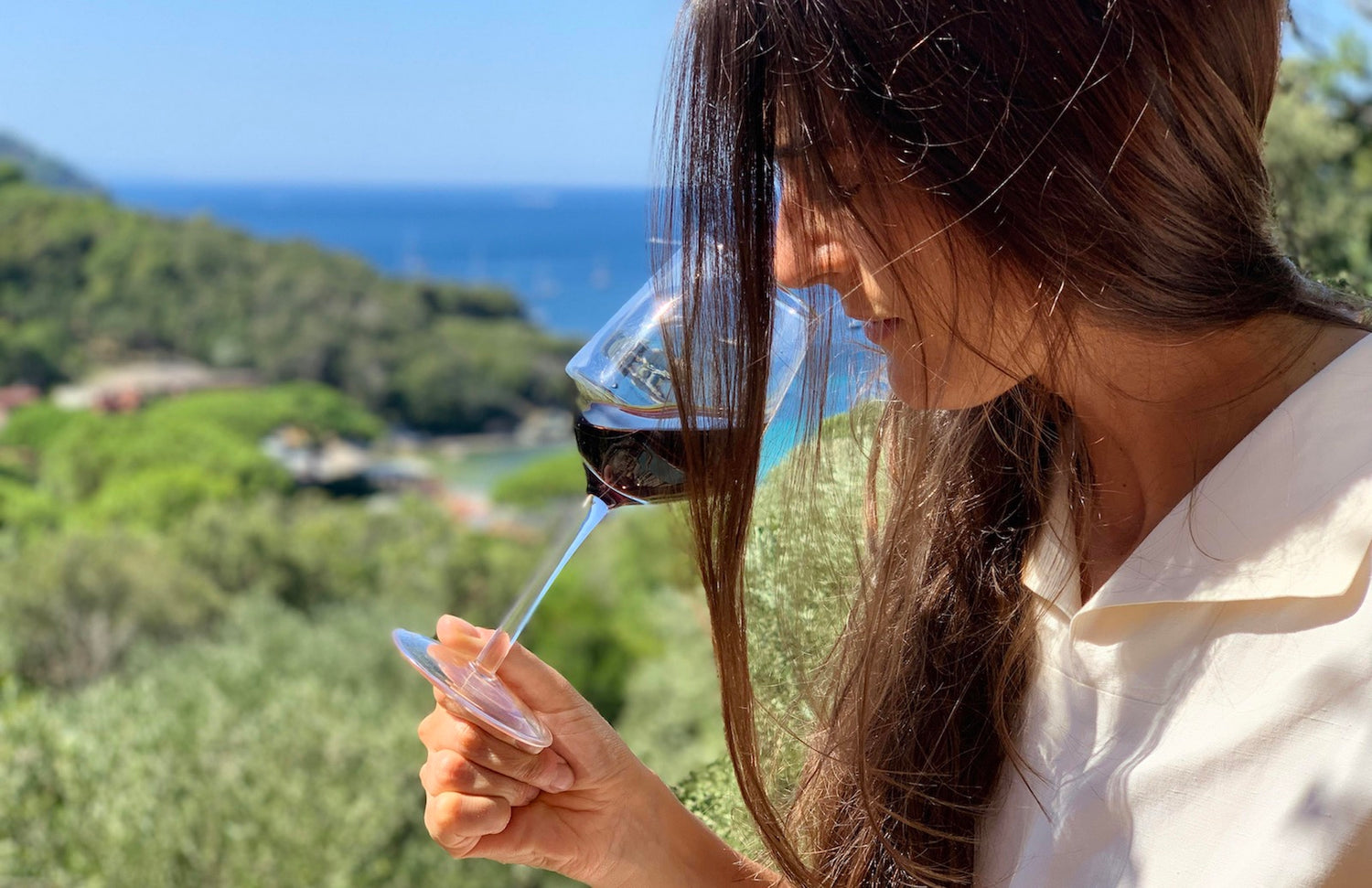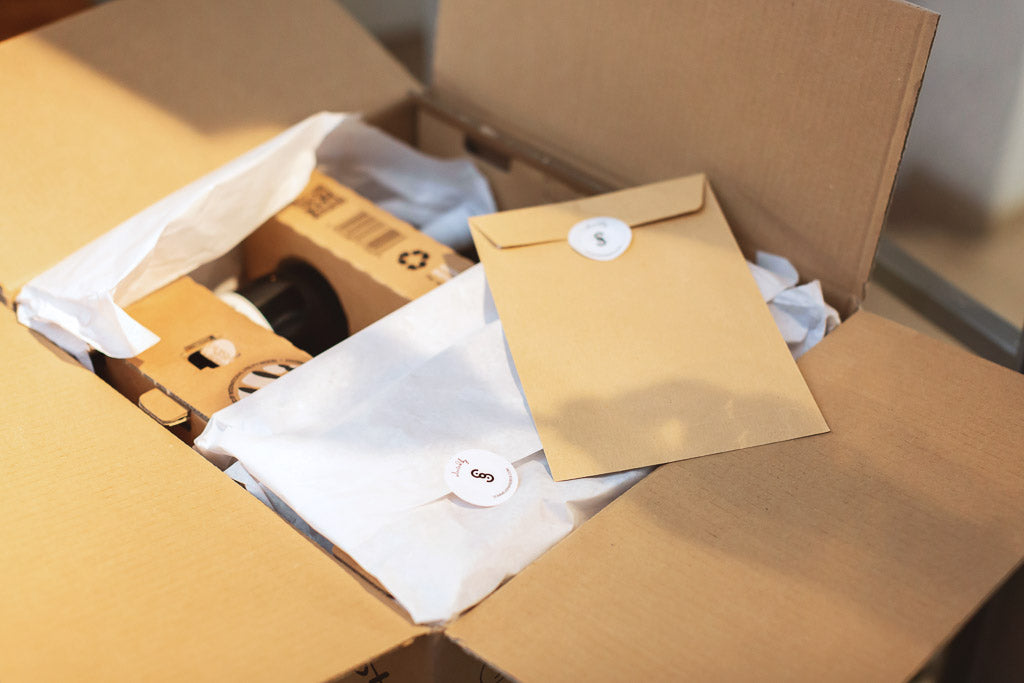Smelling wine and listening to the story it has to tell us means not only showing off clear skills (innate or the result of study and practice), but above all bringing back memories through those scents, reawakening emotions that were thought to be buried. Therein lies the magic of wine.
Here is a small guide to olfactory analysis, to learn how to smell wine and understand more about it.
1. How does the nose perceive the aromas of wine?
You can smell the aromas because the odorous substances in wine are volatile, they enter the upper part of the nostrils, from there they reach the brain and the magic begins. The nose perceives odours in two ways: by direct aspiration and retronasally. The latter is experienced when, having swallowed the wine, one exhales and can savour the so-called retro-olfactory aromas.
2. Why is it important to 'breathe' wine?
Olfaction is considered a fundamental part of wine tasting, probably the most important. Each wine bears the traces, synthetic and surprising, of the characteristics of its land, the vine, the vintage (climate, water, sun of that specific year), the winemaker who made it, with his production philosophy and his idea of wine. From its perfume you can understand a lot of this and begin to understand if it is of quality. Moreover, it is fun to let the history of that wine emerge from the glass and intertwine it with one's own memories.
3. How does one become good at understanding the aromas of wine?
You only understand what you know, so to become a champion of the sense of smell you either have innate and instinctive gifts (which often means being raised in nature) or you have to be curious about scents and train yourself to recognise them. With training, you will begin not only to recognise them, but also to do so more quickly. So sniff fruit, flowers, spices and all kinds of smells, noting how they evolve under different conditions. More generally, use your nose, do it critically and daily. In wine, you will then be able to find the smell of freshly mown grass, the scent of the sea, the smell of baked bread, the incense of processions, a fireplace where the fire has just gone out, a mountain path wet with the first drops of rain, a shop teeming with flowers...
Those who love to cook are very exposed to scents and do an involuntary and continuous workout.
For everyone: learning to recognise them gives a unique pleasure.
4. I'm looking at the glass: how do I do it?
You start by sniffing the wine with the glass still, to smell the more volatile elements (the scent is very intense if you smell it from a distance, not very intense and therefore more timid if your nose has to dive into the glass to feel it).
Then it is swirled (not too much!) and smell again. In this way, I can not only tell if a wine is elegant and fine, but also the progression of the aromas, because the story is just beginning. It is with these details that we begin to understand if we are dealing with a great wine, if it has subtle aromas full of many different nuances; in this case it will also be complex.
Be careful not to get addicted: to avoid this, the nose must be removed from the glass after a few seconds.
The absence of defects is expressed by calling the wine clean or frank.
5. Is there a pattern to follow in the olfactory analysis of wine?
Especially for those who are learning, it is useful to have an order to keep in mind to identify the nature of scents. Then training leads not only to refinement but above all to a creative approach to the pattern. Here are the main aroma families to recognise and also various detail scents, which you begin to distinguish over time:
Floral fragrances (hawthorn, orange blossom, almond blossom, acacia, lime, jasmine, elderflower, rose, broom, chrysanthemum, violet, lilac, iris, lavender, geranium, hyacinth, you name it)
Fruity fragrances
Fresh fruit (apricot, peach, banana, apple, melon, pineapple, passion fruit, grapefruit, lemon, lime, orange, mandarin, citron, cherry, plum, strawberry)
Berries (raspberry, blackberry, blueberry, currant, wild strawberry)
Dried fruits (almond, hazelnut, walnut, pistachio, sultana, fig)
Cooked fruit (plum jam, apricots, pears, orange peel)
Herbaceous (fresh grass, hay, fern, undergrowth, moss, mushroom, green pepper, tobacco leaf, tomato leaf, tea, mint, sage)
Spicy and aromatic (anise, cinnamon, mint, thyme, cloves, pepper, fennel, liquorice, nutmeg, bay leaf, basil, vanilla, truffle, saffron, ginger)
Balsamic (resin, juniper, amber, incense, pine)
Toasted (cocoa, coffee, chocolate, caramel, toast, tar, smoked, tobacco, powder)
Minerals (flint, gunpowder, flint, graphite)
Animals (leather, meat, cat urine - typical of Sauvignon, wild, fur, sweat)
Woody (green wood, old wood, chestnut, oak, sandalwood, cigar box)
And to end on a high note, here are the ethereal (enamel, soap, toffee, butter, bread crust, beeswax, milk).
At the end of the analysis, one can conclude which of the various scents is the dominant one, which most characterises the wine: aromatic, fruity, fragrant, herbaceous, mineral, spicy, ethereal, woody... Sometimes it is the grapes themselves that determine the dominant scent, and over time they learn to recognise it. For example: green pepper is a tell-tale sign to identify Cabernet Sauvignon, small berries for Pinot Noir, pepper for Syrah, cherry for Sangiovese and violet for Nebbiolo.
6.What if the wine tastes corky?
This smell occurs when the cork is attacked by mould. It is not a preservation issue and if you notice it, all you can do is open another bottle. For those who want to learn more, we have written about it in a dedicated article. Other smells can also occur, such as that of lees (rotten eggs, in other words) or overcooked fruit or even a decidedly marsal-like odour, typical of over-aged wines. These and other unpleasant odours originate from defects in the grapes or from wine-making practices that are not entirely correct. Remediable may be the 'reduced' odour, similar to the sensation of closed and stale, which may go away, or attenuate, by letting the wine breathe.
Of course, all this has nothing to do with the competition to see who can shoot off the most - more or less improbable - aromas, but rather with the desire to understand quality, which can also be expressed in a few, exact words. Knowing how to recognise what a glass has to say to our sense of smell is an important part of what the great Veronelli called 'drinking intelligently', in order to grasp the story that each wine brings with it.
When we are in front of a great wine, the story will be exciting.




